What is a Shaker kitchen? A look at this well-loved design
What is a Shaker kitchen, aside from being simple, beautiful and practical? We take a look at their history and how to use this design in modern spaces
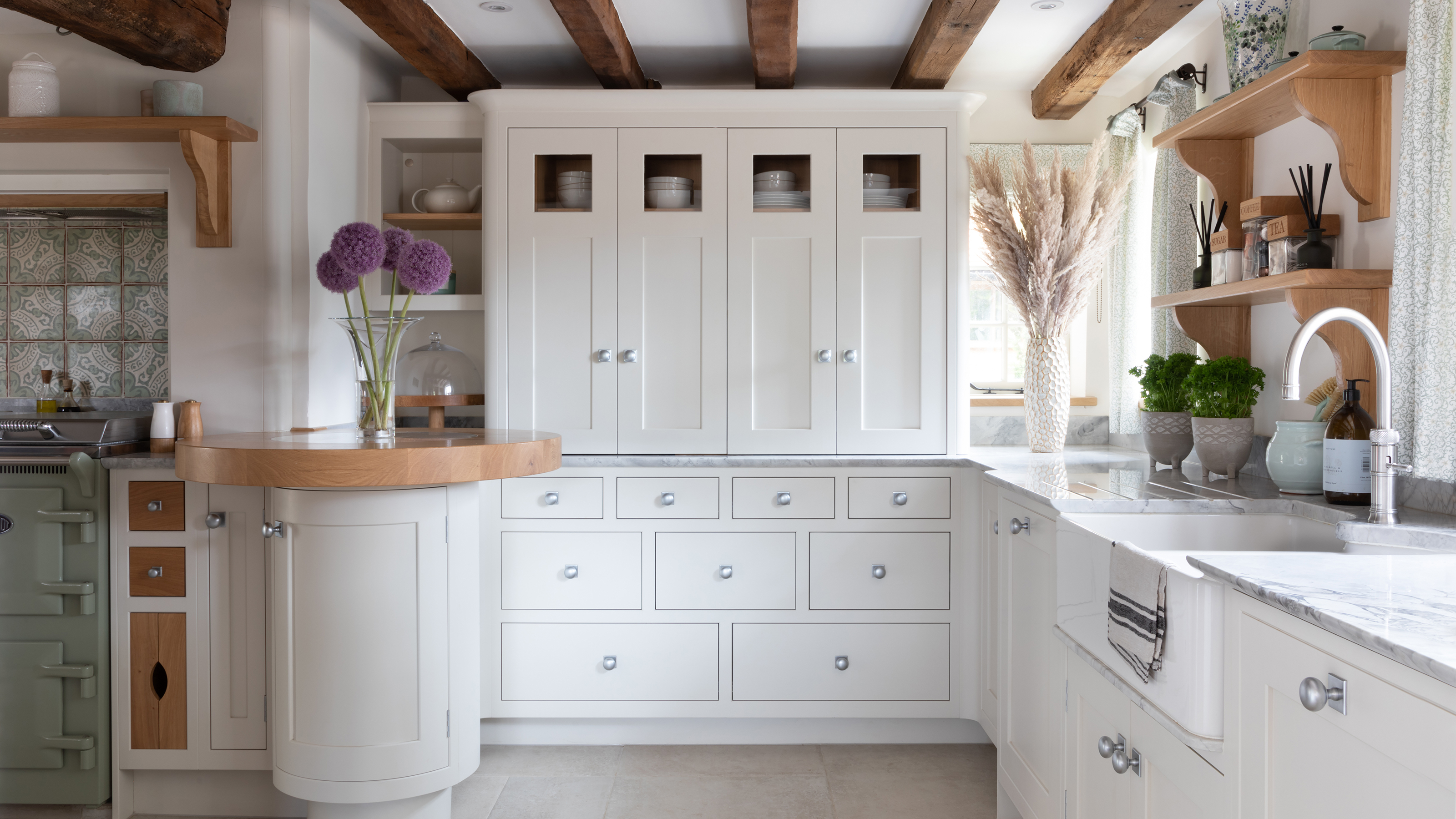
Many people still ask 'what is a Shaker kitchen?' despite this being one of the most popular styles of kitchen around.
Kitchen design makes up one of the most important elements of the home; this being the space that life tends to revolve around and the spot where everyone seems to congregate. As such, this is a room that needs to serve practicality and aesthetics in equal helpings.
This perhaps goes some way towards explaining the fact that Shaker kitchens remain at the top of many people's wish-lists, despite being a style that has been around for hundreds of years.
These kitchens are timeless, simple and beautiful, as well as being easy-to-live with and benefitting from an uncanny knack of being able to fit within any kind of interior scheme, from sleek and contemporary to cosy and classic.
Here, we explain what a Shaker kitchen is, how they have evolved over time and how you can use this style in your own home now.
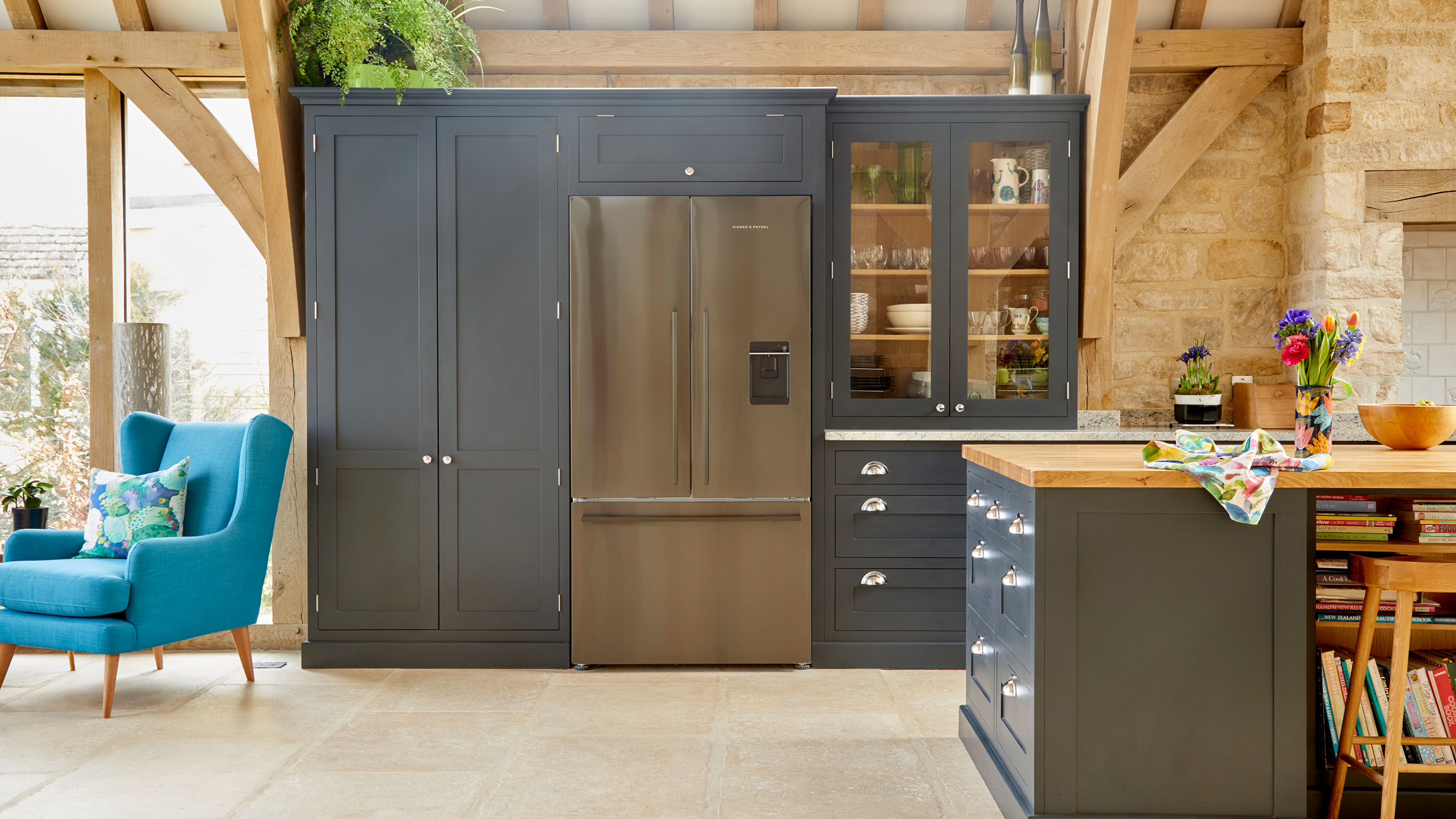
What is a Shaker kitchen? The history behind them
Shaker kitchens have been around since the middle of the 18th century and are so called because of the religious group behind their design — the 'Shaking Quakers', later known as just 'Shakers'.
The Shaker community had a set of core principles and strongly believed that home fittings should all have a purpose, be practical and devoid of any unnecessary decoration — in short, they were masters at creating furniture that was simple, functional and built to last.
They used wood to construct their kitchens and kept the cabinet knobs equally as minimalist, using simple wood fittings. Sometimes the wood was left bare, while other times they would paint the kitchens. It was not unheard of for cabinets to be combined with peg rails from which utensils could hung within easy reach.
How are Shaker kitchen cabinets made?
Shaker kitchens are instantly recognisable by their flat centre panel and raised rectangular frame.
Traditionally, the Shakers used inexpensive yet durable and high quality wood species for make their kitchen units, such as pine, maple and cherry wood. However, these days Shaker kitchens are often made from a variety of other woods as well as particle board with a melamine, timber veneer or foil finish.
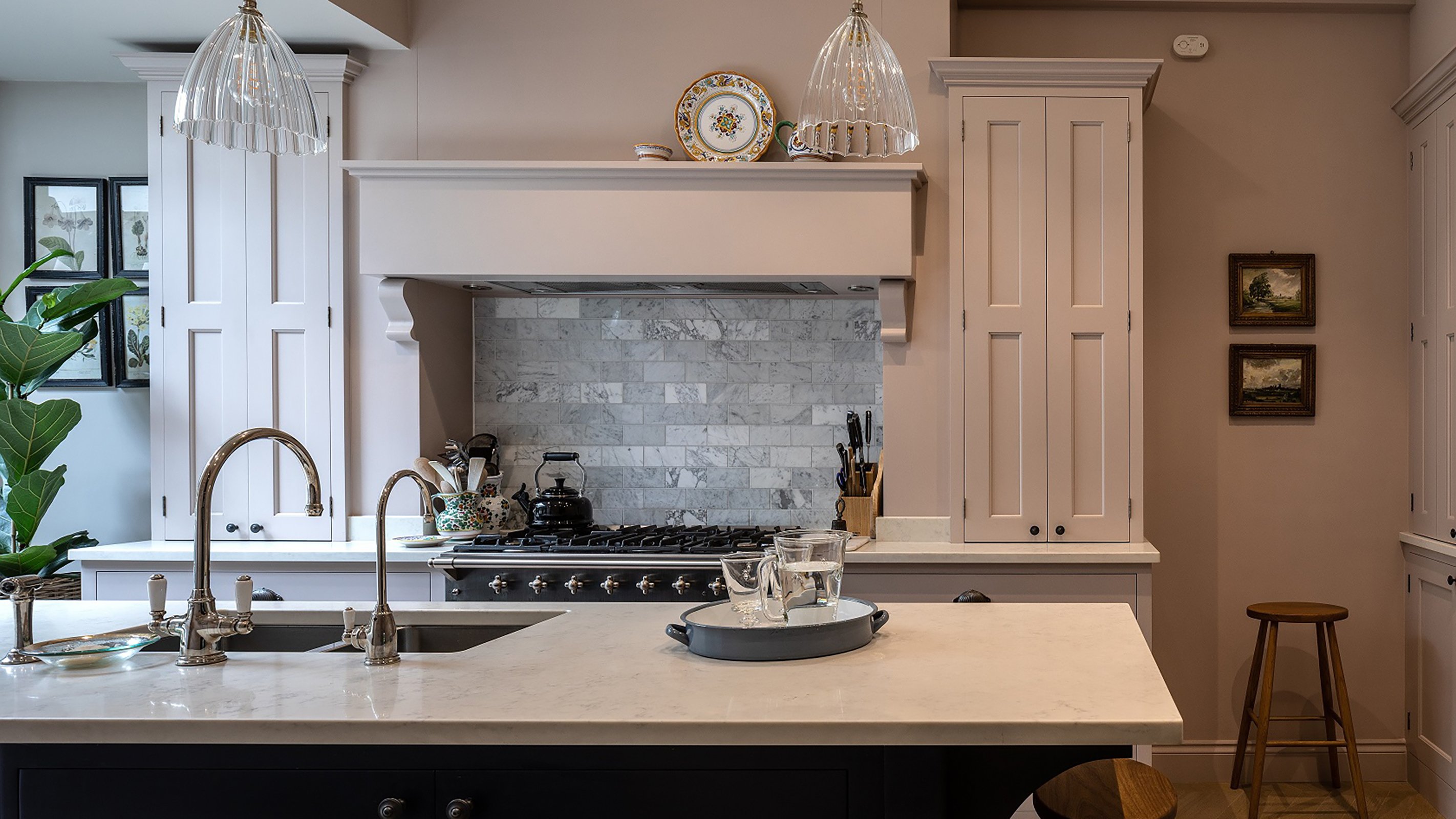
What are traditional Shaker kitchen colours?
Shaker kitchens were not always painted — sometimes the wood was left in its natural state and this is something people after wooden kitchen ideas might like to explore.
However, the Shakers were not averse to painting their kitchens, usually sticking to colours such as dark red, ochre yellows, deep blue and forest green, with a matt finish — colours which, funnily enough, are also enjoying great popularity now.
If you want your kitchen to have a really authentic finish, do as the Shakers commonly did and opt for a wooden floor, hanging storage and keep walls muted or white.
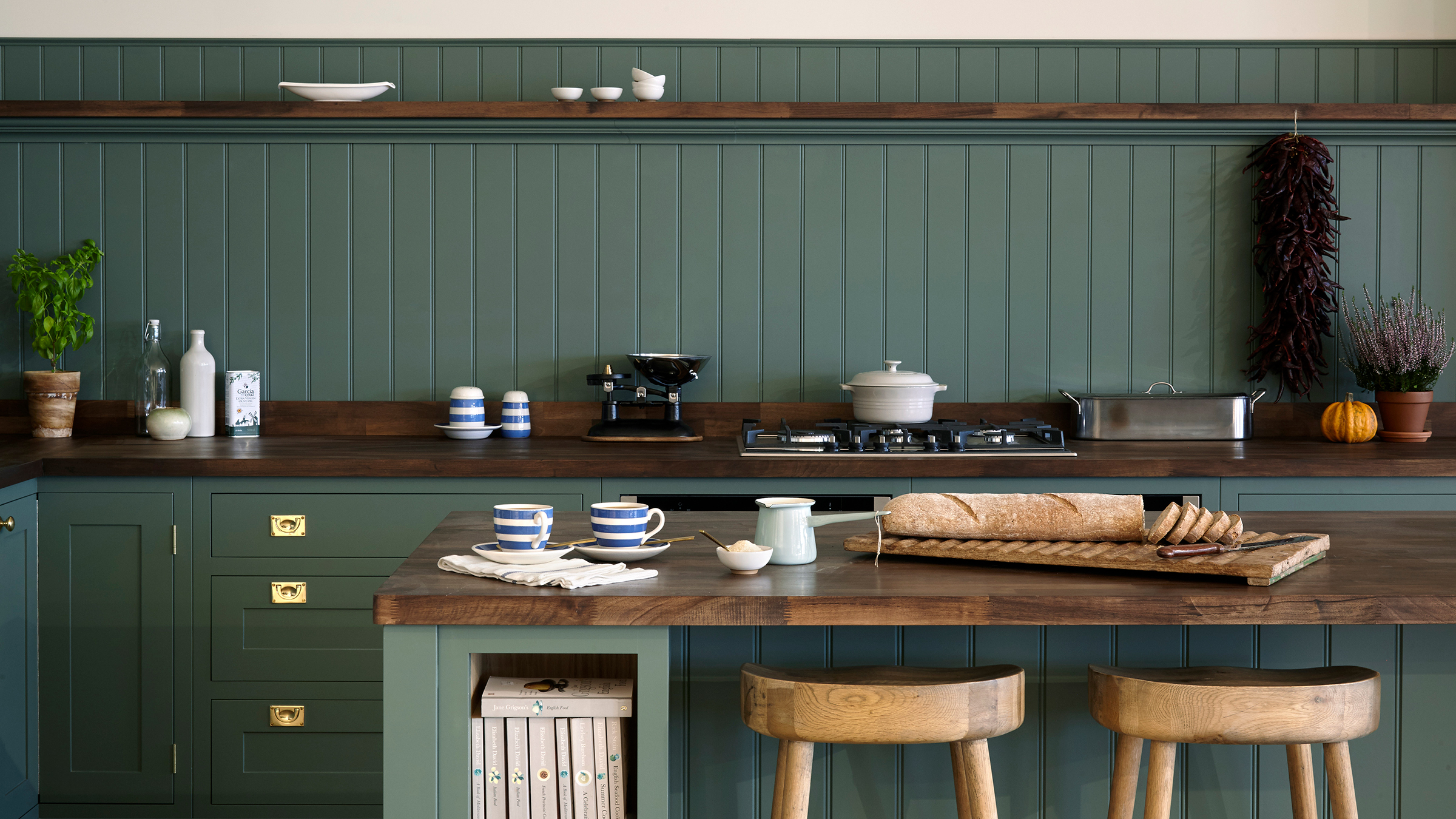
Are Shaker kitchens old fashioned?
Shaker kitchens might have historical roots, but they are most certainly not old fashioned. Their unfussy design means that they look as fresh and modern today as they ever did — and that they are unlikely to date in the years to come.
The great thing about these kitchens is that their simplicity allows them to be paired with more modern kitchen ideas too for a mix-and-match look.
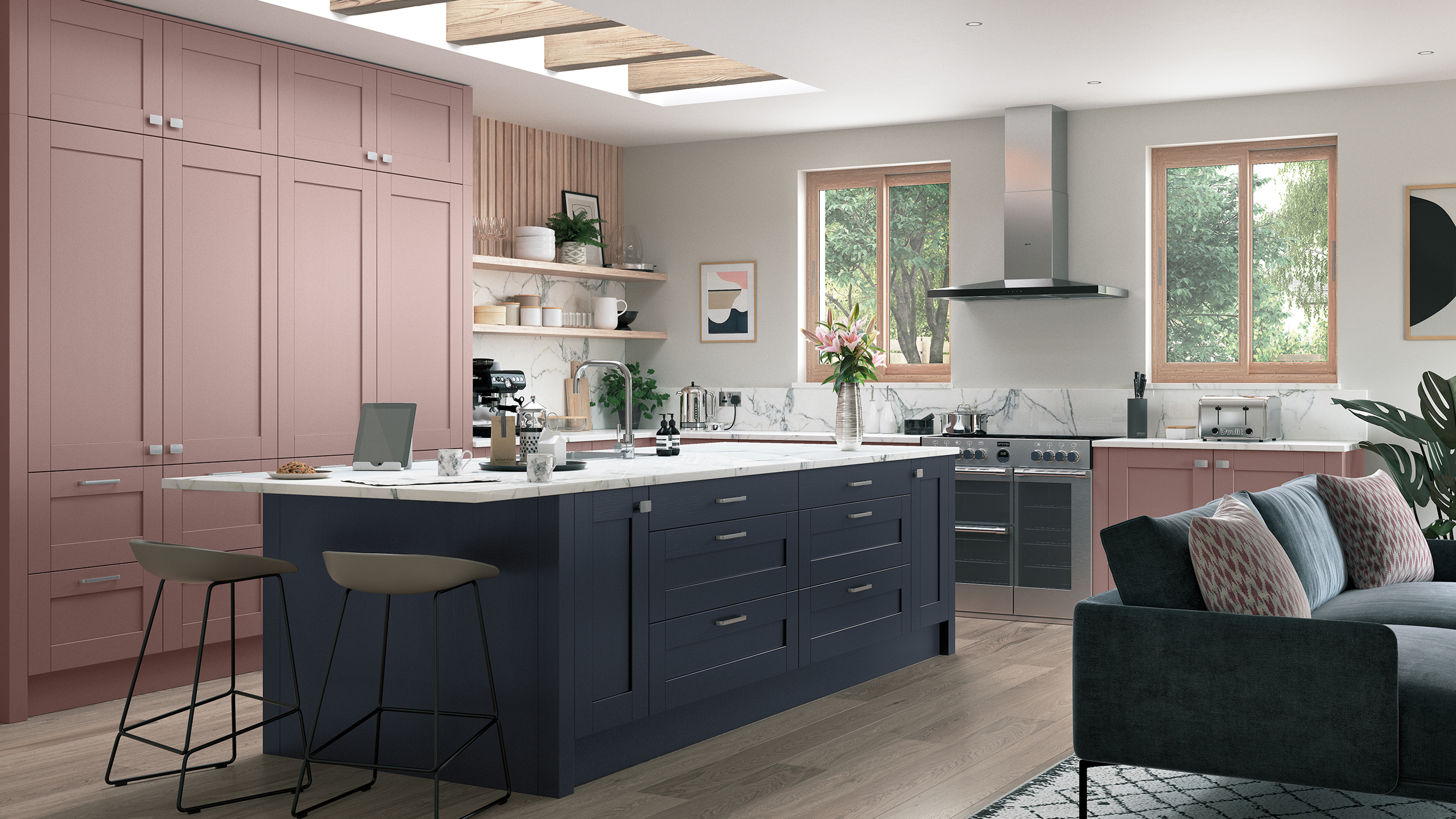
What are modern Shaker kitchens?
While the basic design of the Shaker kitchen has not altered over the years, there have been updates that mean it can work just as well in contemporary kitchens as it does in more traditional schemes.
So whether you want to include kitchen island ideas or have your eye on a sparkling composite worktop, you will most certainly not be restricted by a Shaker kitchen.
In order to create a modern Shaker kitchen, while retaining the pure lines and timeless beauty, consider the following:
- Incorporate a kitchen island: While the original Shakers were more likely to rely on a simple scrubbed refectory-style table over an island, this can make a nice update. Many kitchen islands are designed with Shaker influences and can pack in many useful storage facilities too, such as wine coolers.
- Look at alternative unit handles: While simple and chunky wooden knobs look perfect alongside Shaker-style unit doors, there are other options which will instantly update the look. Pull bars actually suit the straight lines of Shaker doors brilliantly and come in all kinds of metals and colours, while cup handles and more unusually shaped knobs, such as oval and square, are also nice modern upgrades. You could even go super sleek with a handleless Shaker kitchen.
- Fit clever kitchen storage: There is plenty you can do to make sure your Shaker kitchen works for a modern lifestyle and one of the best ways to update these kitchens is to include sneaky storage. From pull-out larder shelving to carousels, along with extra deep drawers for pots and pans — the key is in ensuring you have enough space for your needs.
- Top traditional units with a modern worktop: This style of kitchen can really benefit from contrasting styles and materials and using a modern worktop material, such as white quartz or poured concrete, will only serve to highlight the clean lines of the unit fronts.
- Be bold with colour: Shaker kitchens look fantastic in pretty much any colour you can think of — so if you have your heart set on a hot pink kitchen, don't be put off by the traditional roots of this kitchen style.
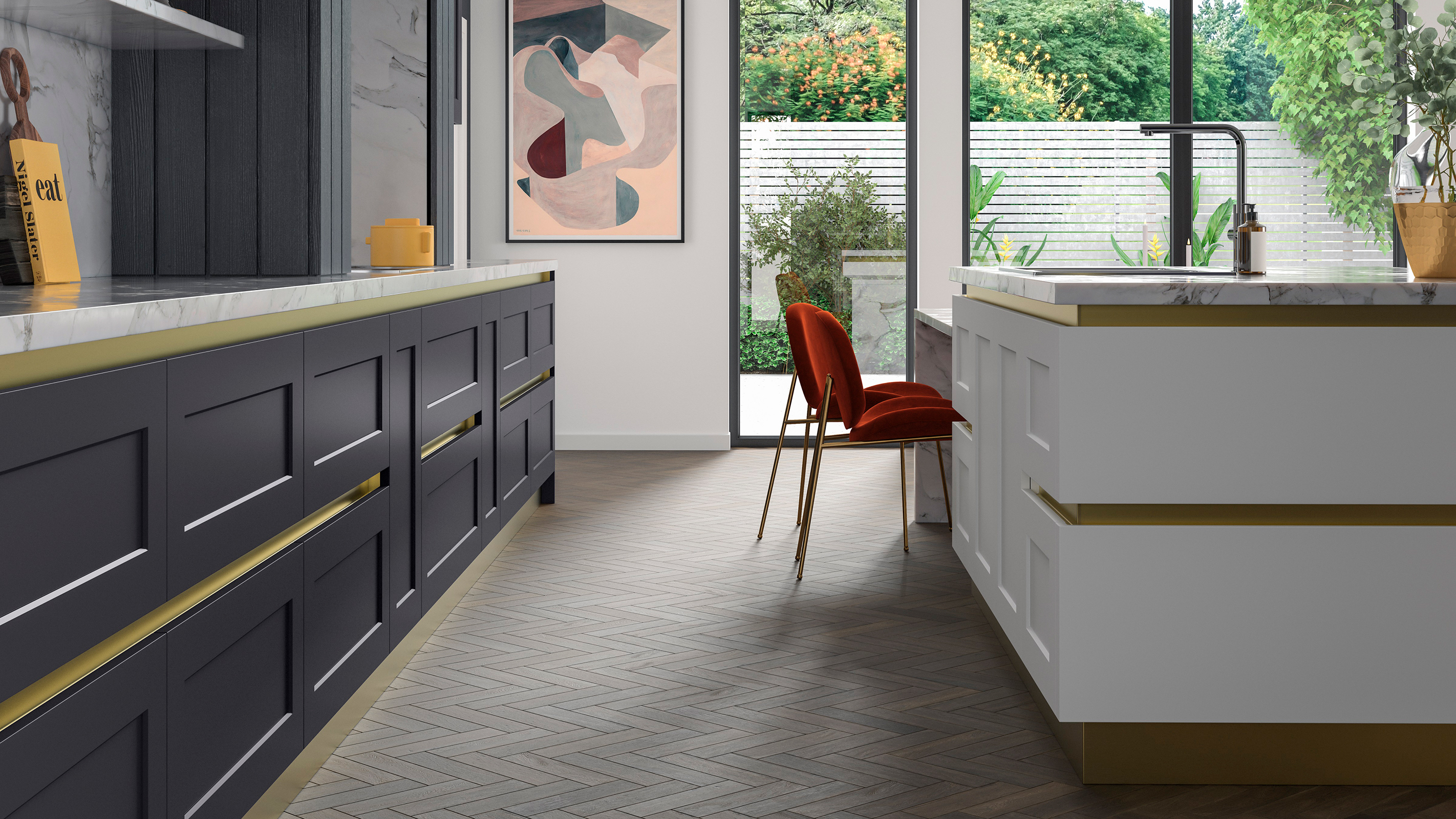
How much do Shaker kitchens cost?
How much does a new kitchen cost? It is usually the first question people about to take on a kitchen makeover, or fit an entirely new kitchen, ask. Sadly the answer is not altogether straightforward and determining the cost of a Shaker kitchen is no different.
Shaker kitchens, like other style, come with many different prices tags and are available in both standard off-the-shelf flat-packed products as well as high-end, bespoke designs.
Flat-pack Shaker-style kitchens can be picked up for as little as between £1,500 and £3,000, while bespoke kitchens can easily cost well over £50,000. It could be useful to note that at the lower end of the kitchen price scale, the average spend tends to lie around the £8,000 mark.
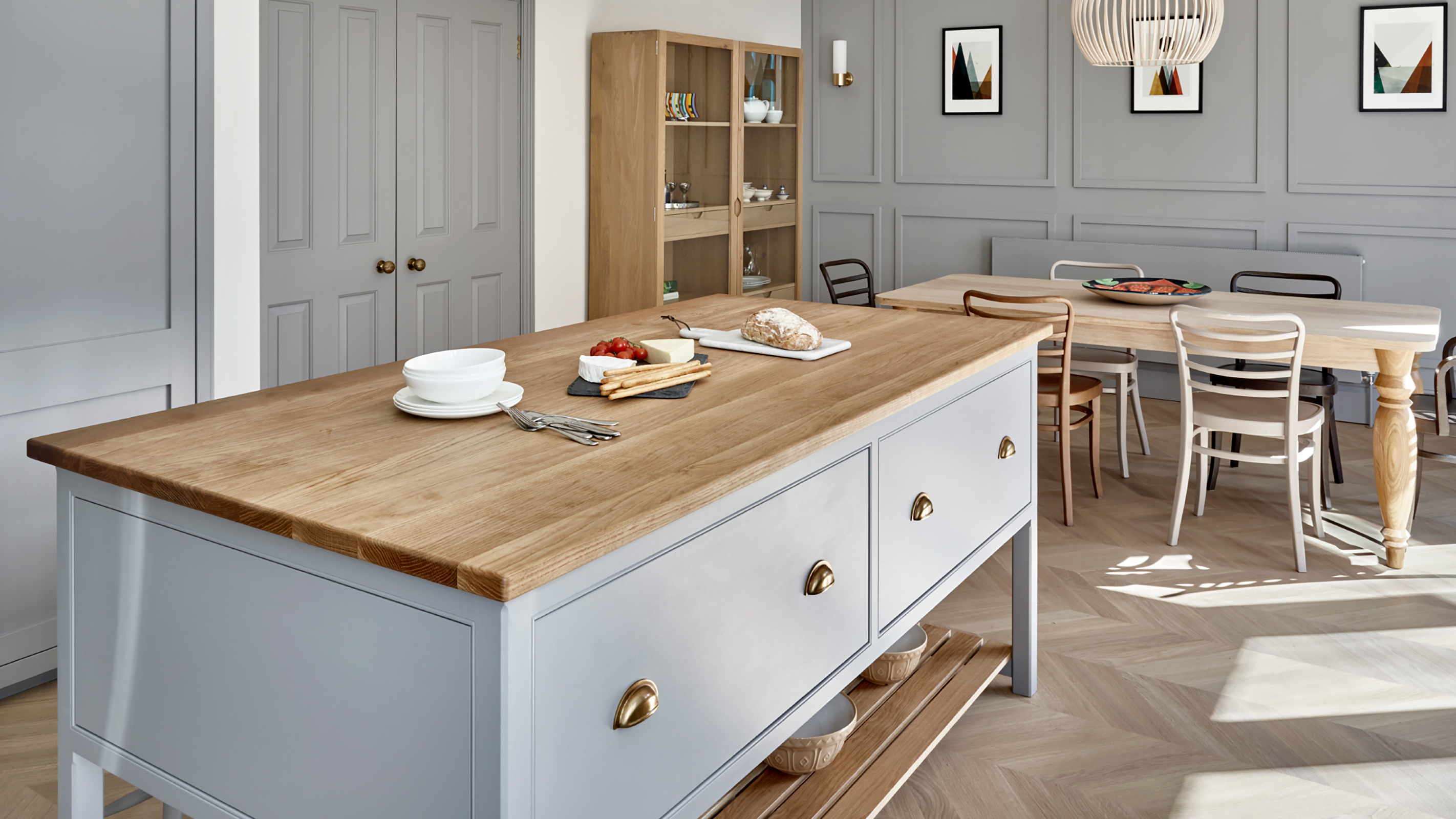
Get the Homebuilding & Renovating Newsletter
Bring your dream home to life with expert advice, how to guides and design inspiration. Sign up for our newsletter and get two free tickets to a Homebuilding & Renovating Show near you.
Natasha was Homebuilding & Renovating’s Associate Content Editor and was a member of the Homebuilding team for over two decades. In her role on Homebuilding & Renovating she imparted her knowledge on a wide range of renovation topics, from window condensation to renovating bathrooms, to removing walls and adding an extension. She continues to write for Homebuilding on these topics, and more. An experienced journalist and renovation expert, she also writes for a number of other homes titles, including Homes & Gardens and Ideal Homes. Over the years Natasha has renovated and carried out a side extension to a Victorian terrace. She is currently living in the rural Edwardian cottage she renovated and extended on a largely DIY basis, living on site for the duration of the project.

